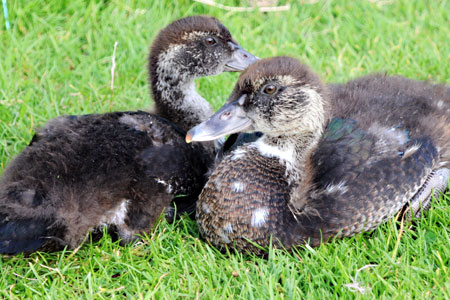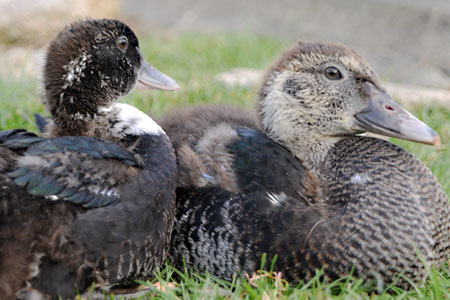Welcome to Relaxed Farming
- Alpacas
- Chickens
- Dairy Goats
- Ducks
- Geese
- Pigs
- Pygmy Goats
- Quail
- Rabbits
- Sheep
- Turkeys
- Polytunnel
- Photo Stories
- Video Stories
- Food
- Smallholding Map
- 2013
- 2014


- August
- September
- October
- November
- December
- January
- February
- March
- April
- May
- June
- July
- August


- 1
- 2
- 3
- 4
- 5
- 6
- 7
- 8
- 9
- 10
- 11
- 12
- 13
- 14
- 15
- 16
- 17
- 18
- 19
- 20
- 21
- 22
- 23
- 24
- 25
- 26
- 27
- 28
- 29
- 30
- 31
Tuesday, 1st July 2014
We have started to advertise our ducklings and turkey poults as now being for sale. We hope to sell most of the turkeys and just keep a few to raise for meat! We would like to sell as many of the ducklings as we can too. We sold two of the turkeys a week or so ago and today had a visit from a lady from the next village who wanted two ducklings as pets. As with the person who bought the turkeys, she ideally wanted females and so we spent some time deciding which ones might well be ducks as opposed to drakes. At five and a half weeks (the age of our oldest ducklings) it is still a little too early to tell for definite but there are some clues...
In the left hand photo are what we think one female and one male!! Can you see any difference? What we are looking at here is size: the male (on the right) has a larger head and body! From around four weeks old the males will start to get bigger: bigger heads and bodies and, although not visible here, bigger feet. In the right hand photo the one we think is female is also on the left. Look at her wing: you should be able to see the start of her green primary feathers (one of them is tinged with a dot of white). Now look at the male: the end of his wing is full of brown downy feathers still - he has not yet started to grow his proper feathers here at all!!
An interesting question has to be why do the females feather up quicker than the males??
In other species of duck, the drakes don't quack but the females do and that is a great way of telling the difference. Unfortunately Muscovies don't really quack at all, both sexes just 'hiss'. Another telling sign in some ducks is a curly tail in the male, but again Muscovies don't have this.
We very much hope we have sold our customer two females but she understood we could not be absolutely sure and as with all our poultry we always offer a swap (although often the birds in question are much loved by the time their sex is obvious...).
And two quick updates: Onion's lump is looking as though is it nothing too nasty BUT we still have another test result to wait for... and Parsley's kids are due any day now so we are back to two-three hourly checking. It will be amazing to have such young kids around again!!!

